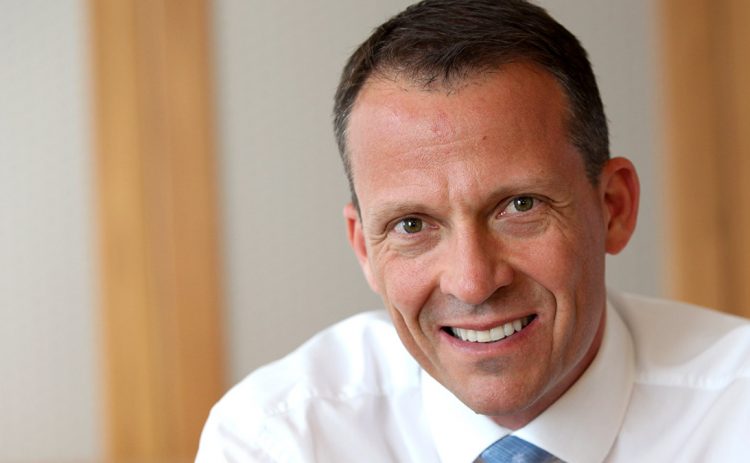
Mainstream Online Web Portal
LoginInvestors can view their accounts online via a secure web portal. After registering, you can access your account balances, periodical statements, tax statements, transaction histories and distribution statements / details.
Advisers will also have access to view their clients’ accounts online via the secure web portal.
The Point
Quick, actionable insights for investors
Australian Equities

Crispin Murray: What’s driving markets this week?

What’s driving ASX stocks this week?
Quick view
What’s driving ASX stocks this week?

Aussie equities: How Xero and NEXTDC are leveraging AI technology
Quick view
Aussie equities: How Xero and NEXTDC are leveraging AI technology
On a tour of the US late last year, Pendal equities analyst Elise McKay met with dozens of companies – and found generative AI was a topic in almost every meeting.
“There’s strong evidence that over the longer-term generative AI will have a big impact across the business landscape,” McKay said at the time.
Six months later, investors are still entranced by the US “Magnificent Seven” tech stocks.
But several ASX-listed companies are making solid progress in leveraging the technology, points out Elise. These include cloud-based finance software maker Xero and data centre manager NextDC – both held by Pendal.
In her latest update, Elise outlines XRO’s “Just Ask Xero” AI assistant and NXT’s Nvidia-based “AI factory” which is expected to launch in coming months.
Elise also addresses one of the big issues that continues to face the AI industry – access to power.
The industry is working on solutions including better computing efficiency, improved cooling technologies and alternative power sources.

Jim Taylor: What’s driving ASX stocks this week?
Quick view
Jim Taylor: What’s driving ASX stocks this week?

Crispin Murray: What’s driving markets this week
Quick view
Crispin Murray: What’s driving markets this week

ASX earnings season: Opportunities to be found in industrials
Quick view
ASX earnings season: Opportunities to be found in industrials
Despite some negative surprises among industrial stocks this ASX earnings season, the sector still offers opportunities for stock pickers.
“Several industrials companies have demonstrated weakness for the December six months, and it’s been a surprise,” says Pendal equities analyst Anthony Moran.
Some industrials showing cyclical weakness are priced attractively, he says. But investors need to scrutinise margins.
“You want to look for a company that has the ability to grow above its end market market rate, so that it has the potential to accelerate its share, even in a declining market.
“The next 12 to 24 months is going to be the great normalisation of the post-Covid super-cycle in margins, at least for the industrials sector,” Anthony argues.

ASX outlook: What’s driving Aussie equities this week

Crispin Murray: What’s driving the ASX this week
Quick view
Crispin Murray: What’s driving the ASX this week

Jim Taylor: What’s driving ASX stocks this week?
Quick view
Jim Taylor: What’s driving ASX stocks this week?

What’s driving ASX stocks this week?
Quick view
What’s driving ASX stocks this week?
Here are the main factors driving the ASX this week, according to Pendal portfolio manager PETE DAVIDSON. Reported by investment specialist Chris Adams.

Crispin Murray: What’s driving the market this week?
Quick view
Crispin Murray: What’s driving the market this week?
Most people would be aware from last week’s per-capita recession headlines that Australia’s population growth is outstripping economic growth.
But population growth – especially immigration and temporary visas – is also supporting corporate earnings, says Pendal’s head of equities Crispin Murray.
“All up, we’re probably looking at about a 3 per cent rise in the population today versus a year ago.
“People are coming to Australia with money in their pockets, setting themselves up and getting accommodation – which is driving up rents.
“Part of the reason we’re seeing resilience in the top line of companies is because they’re basically driven by nominal GDP, not per capita GDP.”
Population growth is also offsetting the effects of the ‘mortgage cliff’ which forces households into higher, variable mortgage payments as low-rate fixed loans expire, Crispin says.
“With each company we met over reporting season, we talked about the issues facing them and if they were seeing consequences from this mortgage cliff. So far, the consequences are very limited.”

Crispin Murray: What’s driving ASX stocks this week
Quick view
Crispin Murray: What’s driving ASX stocks this week
Most people would be aware from last week’s per-capita recession headlines that Australia’s population growth is outstripping economic growth.
But population growth – especially immigration and temporary visas – is also supporting corporate earnings, says Pendal’s head of equities Crispin Murray.
“All up, we’re probably looking at about a 3 per cent rise in the population today versus a year ago.
“People are coming to Australia with money in their pockets, setting themselves up and getting accommodation – which is driving up rents.
“Part of the reason we’re seeing resilience in the top line of companies is because they’re basically driven by nominal GDP, not per capita GDP.”
Population growth is also offsetting the effects of the ‘mortgage cliff’ which forces households into higher, variable mortgage payments as low-rate fixed loans expire, Crispin says.
“With each company we met over reporting season, we talked about the issues facing them and if they were seeing consequences from this mortgage cliff. So far, the consequences are very limited.”
Loading posts...
Loading posts...














